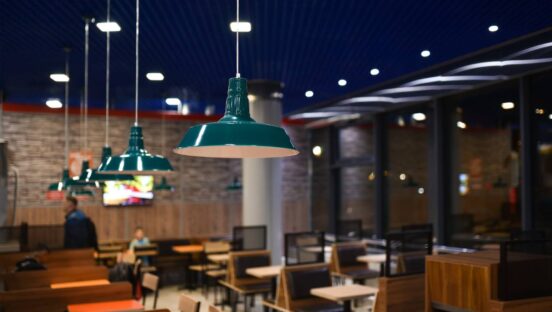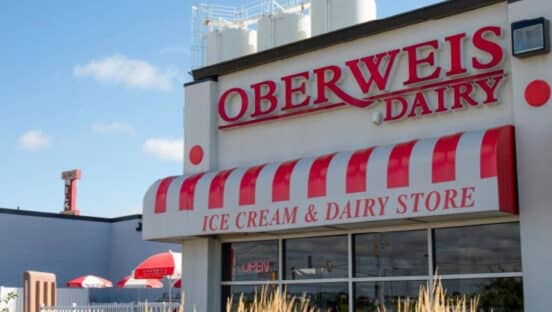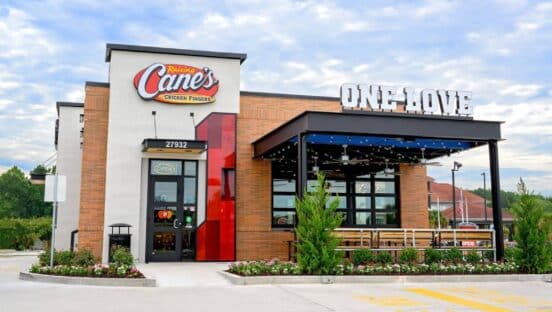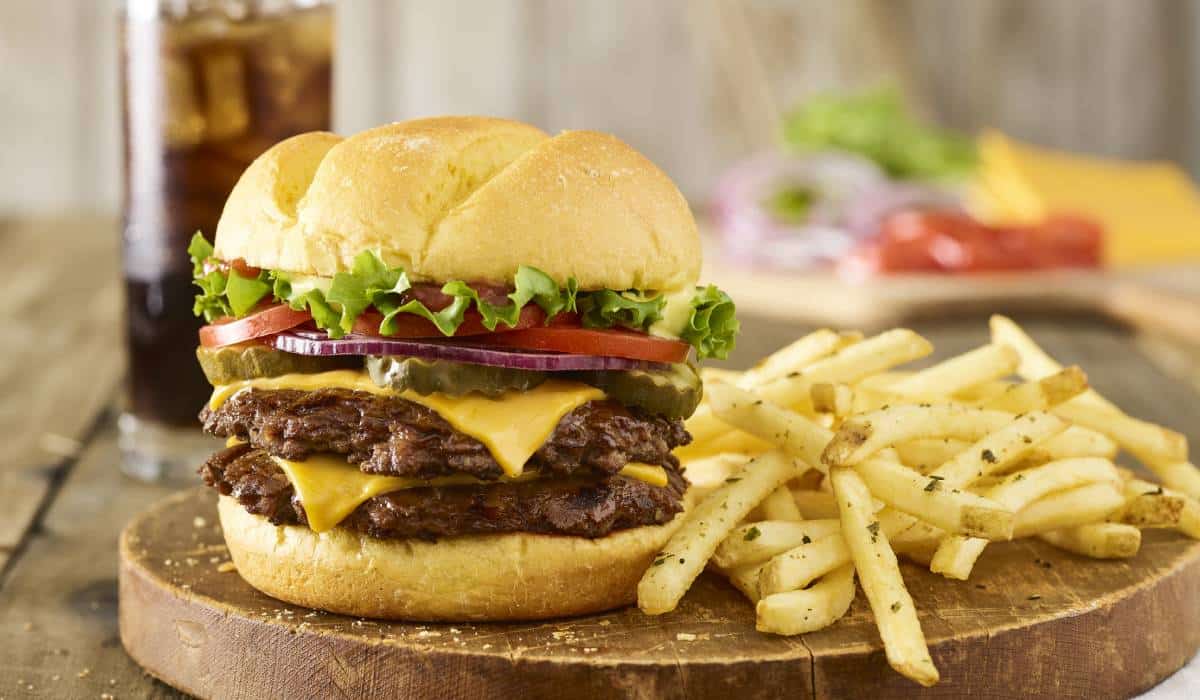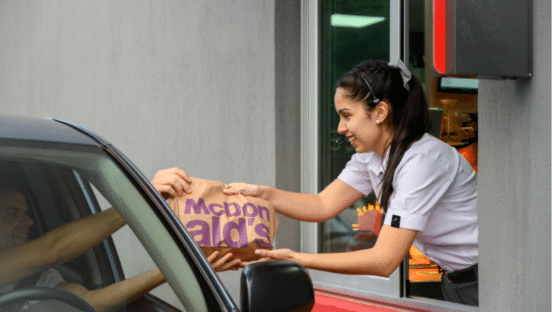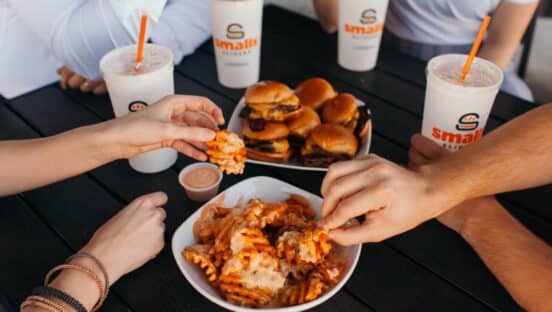A lot of us could agree we’d like to put 2020 in the rear view, and then back over it a few times before going forward. But the reality isn’t so tidy. The restaurant industry greeted January with some concerning trends in tow.
For the full year, industry same-store sales declined by nearly 17 percent, according to Black Box Intelligence. Traffic fell 20 percent. While these COVID-19-sparked figures are hardly surprising at this point, it’s worth taking a closer look.
The sector’s Q3 same-store sales declined 11.4 percent—a far cry from earlier Q2 depths, when comps dropped 35.1 percent, year-over-year. Although not a bottom-out, Q3’s performance does suggest a stagnation. Same-store sales in Q4 remained flat in comparison with the previous quarter. Additionally, the lost revenue from restaurants that had to close completely compounded the industry’s troubles in 2020, Black Box said. It’s safe to assume that those restaurants that have not been in operation for the last nine months are likely now permanently closed.
By the end of 2020, the insights platform reported, about 8 percent of chain restaurant locations remained completely shuttered.
As has been the case since day one, COVID did not treat restaurants equally in 2020. Limited-service brands weathered the off-premises shift better and, by Q4, were able to return to positive same-store sales growth at 1.7 percent versus year-ago levels.
It’s been a different tale for full-service restaurants. Even climbing out of the early trough, sit-down chains closed the final quarter of 2020 down 22 percent. Furthermore, Black Box said, the industry seems to be reverting to where it was earlier in its recovery as COVID cases surge and states heighten restrictions.
CHECK OUT THE FULL GUIDE FROM BLACK BOX
When the pandemic began and the most severe shelter-in-place orders rained down—during the second half of March and April—about 95 percent of all restaurant sales were for off-premises consumption, Black Box said. A staggering number. Yet even with dining rooms reopening, off-premises still represents a much higher percentage of overall restaurant sales today than it did pre-COVID. Also, during the last weeks of 2020, mix started to rise again for full-service restaurants as they ceded dine-in occasions, either to Mother Nature or to capacity getting pulled out of dining rooms.
In December, off-premises sales represented three times the percentage of totals sales for full-service restaurants, compared to pre-COVID marks. For quick-serves, the reliance on drive thru, to-go, and delivery increased. Off-premises sales mix remained 15 percentage points higher by end of 2020 compared with the year’s first two months (before COVID landed).
In a recent report, Black Box explored what restaurants should watch for in 2021 and how to prepare. There are no shortage of places to start.
Understanding the economy in 2021
Joel Naroff, a Black Box Intelligence economist and president and founder of Naroff Economics, LLC, believes the country could be headed for uncertainty. There simply aren’t a lot of other outcomes when you have a pandemic and mass shutdowns to consider.
As Naroff explained, COVID led to the largest decline in economic activity on record, which then saw the biggest increase ever. But the recovery was largely driven by government payments to households and businesses, he said.
Enhanced unemployment payments, emergency pandemic unemployment benefits for previously negligible small business owners and gig workers, and business loans and grants that funded the retention of millions of workers, supported America’s economy.
So there’s a question of what happens when the private sector has to stand on its own. “There are still 10 million people unemployed, almost 20 million receiving unemployment payments and millions of workers whose paychecks are funded by government programs such as the PPP,” he said.
America’s recovery was unevenly distributed and somewhat artificial. And this raises concern for restaurants.
Lower income workers have suffered, while upper income people generally appreciated the opposite. One in four of the jobs lost in the overall economy during COVID have come from restaurants. Buy beyond the labor concern, there’s a spending one, too.
“When the unemployment subsidies run out, so will the spending power of those households devastated by the shutdowns,” Naroff said.
Additionally, government funding kept many firms from failing, he said. When that support evaporates, bankruptcies could surge, restraining job, income, and spending growth.
Once again, restaurants are in for an unbalanced blow. Mass vaccinations should cause the pandemic to lose steam, leading to economic expansion. However, by late spring or summer, Naroff said, the full negative effects of the economic chaos will crystalize. Without additional stimulus, the expansion could fade significantly, leading Naroff to predict second-half growth will be “modest to moderate at best.”
For restaurants, expect demand to vary greatly by segment, he said. Those dependent on lower- to middle-income households might not see a significant rise in demand. Meanwhile, restaurants whose clientele tend to be better off could do extremely well, Naroff said, especially when they reopen fully.
“… follow the details of the employment and income reports,” he said. “They should show how compensation is growing across different income groupings and where customer traffic might rise or even fall.”

Legislation looms
Joe Kefauver, managing partner of Align Public Strategies, shared some thoughts in Black Box’s report on what restaurants can expect from a legislative, regulatory, and reputational lens this coming year.
The pandemic changed the industry’s legislative and regulatory agenda more in one year than the previous 20, Kefauver said. “Not only were a host of new issues put on the table—dining area limitations, health and safety requirements including personal protective equipment, third-party delivery caps, alcohol delivery, cocktails to go and liability protection, to name a few, but our existing agenda of traditional business model issues like wages and benefits were now being viewed through the lens of worker health and safety,” he said.
Did we ever think “essential worker” would be a debate? Or trying to strategize hazard pay or job protection for employees forced to quarantine?
“We can’t fall into the political and reputational trap of arguing our workers are essential, frontline workers when it comes to reopening guidelines and financial support from governments and then simultaneously reject calls for hazard pay, expanded leave and worker health and safety requirements. It won’t wash,” Kefauver said. “So we need to be more thoughtful and strategic in how we approach these issues.”
This is another place COVID’s fallout will manifest. States and localities are strapped, too, as they absorb costs of healthcare day-to-day amid case surges, as well as overall economic struggles. They will look for revenue anywhere they can find it, Kefauver said. The employer community will likely be among the first stops.
All of that isn’t necessarily new, though, he added. Employers had a clear picture before November of what was coming. What wasn’t understood, however, was the fact Joe Biden would be president.
Democrats now own the White House and both houses of Congress. “As a result, the industry will likely be engaged in a more vigorous national conversation around a federal minimum wage increase, potentially play a major role in brokering a workable federal paid leave process and be involved in an additional stimulus package conversation,” Kefauver said. Here’s more on that here. Specifically on the potential stimulus.
A lot is being made of these potential changes (and rightfully so), but Biden will likely get to work on pandemic-related fixes first, Kefauver said. Congress and OSHA will aggressively pursue national workplace safety standards to protect workers from coronavirus transmission. Reversing Trump-era labor regulations will be high on the priority list, as well as a robust climate-related agenda, but those will have to wait until the country curbs COVID a bit, Kefauver said. “At both the state and federal level, responding to COVID-19 will absorb most of the legislative and regulatory energy in 2021,” he said.
When that changes, tipping might be one of the first places to look, as well as the joint-employer definition.
Black Box also dove into some vaccine questions. Namely, will brands require employees to get vaccinated?
“Nonetheless, mandating the vaccine for employees comes with its own implications,” the company said. “It’s unclear for now if the government will provide any assistance with vaccine costs to the restaurant industry and requiring employees to take the vaccine would imply that the employer would cover the expense.”
Black Box noticed among its client base a renewed focus on wellness program, which lost traction over the years. Employers are getting more credit for things like mental health, stress management, financial wellness, and even wellness personal days. All will be tools in the retention battle.
Wage growth has varied for hourly employees during the crisis. Quick-service chains have shown almost no year-over-year growth while line cooks in full service witnessed strong wage growth, Black Box said. There are significant discrepancies between limited and full-service when it comes to annual bonus for restaurant general managers, too.
Management bonuses for quick-serves have held up as a result of the sector’s performance, Black Box said. Full-service general managers, however, are operating in an environment of sizable sales declines. Consequently, these GMs are seeing considerable drops in their total take-home pay compared to what they received in 2019.
Some reactions, changes, things to consider
Digital adoption has been a great thing, in multiple ways, for the industry. Especially quick-serves. But one thing treading under the surface is the potential for “what we can’t have.” The simple fact digital transactions will stir pent-up demand for in-person dining. In other terms, restaurants can serve as the answer to locked-down people craving human connection on the backside of COVID. It’s a reality that could test the supply chain.
Pre-pandemic, service was the attribute that consistently set top performers apart, Black Box said. Guests were initially forgiving of service issues like longer wait times. “Ultimately, service will be more important than ever as guests unleash their pent-up demand for enhanced restaurant experiences,” Black Box said.
It’s a straightforward concept really, although easier to write in a playbook than execute. When people return to restaurants en masse they’re going to seek social interaction past who’s sitting across the table from them. They’re going to want to be waited on, pampered, and served an experience they could never recreate at home. And it will be up to restaurants to deliver. Perhaps more than ever. Because even as that pent-up demand fuels dine-in traffic, customers will still have convenience in their back pocket, with no lack of awareness how to get there.
They’ll know how to dial up delivery, order-ahead, pickup, curbside, and all those channels that kept them afloat during COVID. Understanding the value trade-off between service, time, and price will never be clearer. How some sit-down chains moved toward convenience instead of experience in the years leading up to coronavirus? The industry might see a backtracking now.
Black Box predicts menu innovation will reach new levels and span across all segments as the restaurant experience returns. It will be an effort on operators’ parts to widen appeal to new and regular guests. Although an unfortunate reality, fewer restaurants could result in fewer choices, and more opportunity for brands to chase first-time customers they might not have engaged with before. That’s also true of digital outreach and connecting through one channel to inspire another. It’s worth considering how demographics might have changed as well, particularly in terms of young families migrating from urban markets to suburban ones, and what that means for guest mix. Red Robin recently spoke about this dynamic.
No matter how you put it, there will be market-share up for grabs for those restaurants still standing.
Black Box expects more plant-forward options and big chains to partner with brands such as Impossible Foods and Beyond Meat. Again, erasing the veto vote will have broader implications after a potential rationalization.
Cleanliness will still be the new ambiance, Black Box added, and guests will not be shy about sharing feedback on whether restaurants are following COVID protocols or not. With online review platforms allowing user-generated feedback to include pandemic procedures (was the server wearing a mask …) why guests pick where they dine out has changed. Will it ever be how it was? That’s harder to say.
Tech is coming on fast as well. The use of automation and robotics was accelerated by COVID. Now, in addition to balancing rising labor costs and staffing challenges, options like self-operating kitchens and kitchen robots hold appeal for their ability to reduce human contact and provide a more touch-free experience.
“The coronavirus pandemic also accelerated adoption of digital ordering technology among restaurants and it is here to stay. Consumers are getting used to the convenience of touch-free interactions, plus it has the added benefit of potentially reducing human error in order taking,” Black Box said.


